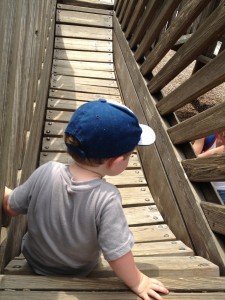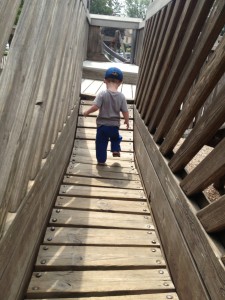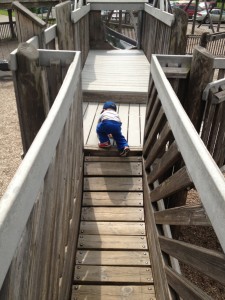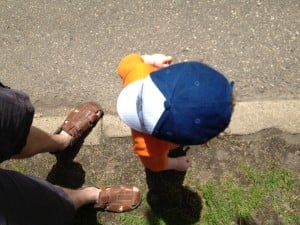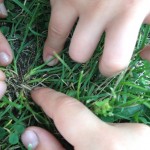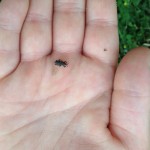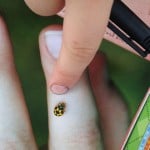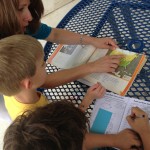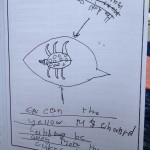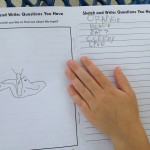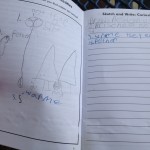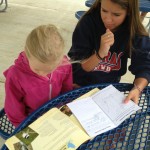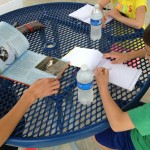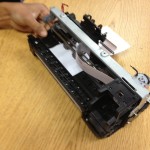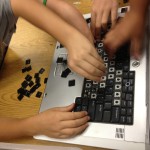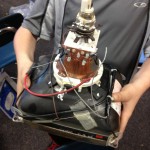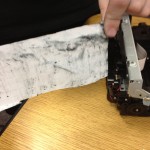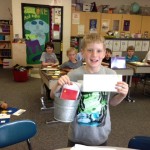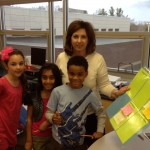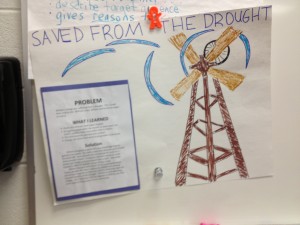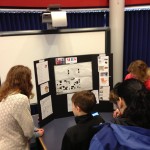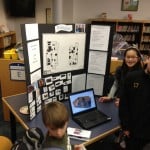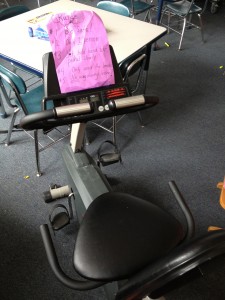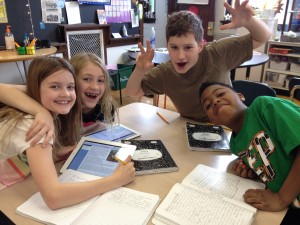Energy Collaboration: Working Together Separately
Learning 365: An Interesting Collaborative Structure That Worked!
Today I had the privilege of attending the Hickey Leadership Planning Summit with my new administrative team (follow the amazing Dan Hickey on Twitter @hickeygroup). I’ve recently been hired as an Assistant Principal at Hart Middle School along side the incredible Wendy Darga (@wdarga), and our awesome Principal Rachel Guinn (@RachelGuinn3). The summit provided some space and time for us to get the ball rolling. Dan Hickey is famous for helping educational leaders “get to work,” and that’s just what we did! It was a day of planning structured around three brief “blasts” from colleagues who were asked to share some of how they think and what they do to work through the daily challenges that we all face. This was a great way to start the year as a team! It was energizing to be working in a room with so many passionate administrators from around the state.
For the most part, Rachel, Wendy, and I sat together thinking through a list of critical questions. We were not engaged with the other groups, but the room was brimming with enthusiasm. A palpable drive to get things done permeated the space from wall to wall. What an interesting and effective way to collaborate. I started thinking of it as “energy collaboration.” While we weren’t interacting with the other groups, we were feeding off of each other’s energy. I thought about how this might work in the classroom. There were dozens of small groups, each one intensely focused on our unique and individual goals, working in different ways through independently designed and implemented activities, within one structure, intended to perpetuate productivity. I wondered about this model for project-based learning. How about professional development? As leaders and learners, supported, but left to our own devices, we met and exceeded our expectations for efficiency. Our interests and specific needs guided our individual progress, while the common need for space and team-time connected every person in that room, and in my opinion…gave us enhanced motivation to stay on task and get things done.
Each work session lasted for about an hour, which seemed like a good amount of time. Not enough time to dilly-dally or get burnt out, but certainly enough to cover several critical discussion points. The “blasts” were five-minute presentations that separated the work sessions. Each one outlined an authentic passion, practice, or challenge, and was conceived of by the presenter. They were great, they cut the work time into manageable segments, and they fired us up to get back to work. The first was from Principal Jessica Carrier (@jcarrierms) about 1:1 tech in the classroom and how it’s essential for staff to be growing alongside students. As administrators, we need to be modeling, providing support, and deigning opportunities for teachers to develop skills and understandings of tools that we expect them to integrate into their classrooms; a great message! Next we heard from Jim Lalik (@jimlalik) who reminded us that people can be stifled by a fear of criticism, and that as leaders we need to focus on positive interactions to build trusting, productive relationships. Jim is a student of Positive Psychology. He shared some though provoking data related to the philosophy. Finally, our superstar Rachel Guinn spoke to the group about Administrative Learning Teams and how we “are all in this together!” She made the great point that when an outside facilitator comes in to lead a group of administrators on a learning path it releases the administrators from their typical design/facilitation responsibilities, allowing them each to focus on individual and collaborative learning; a powerful way to connect and develop as a team. We heard three great messages, from three experienced administrators, separating three intense work sessions. I’ll look forward to using/adapting this structure with my new team for implementation where it fits the needs of our learning community!
It might be cool to try:
Asking various staff members to inject 5 minute “blasts” into long meetings to separate segments and energize/inspire others.
Designing professional learning opportunities in which different groups are working on unique content driven by individual needs and supported in creating distinct learning pathways to suit those needs.
Promoting a tech club for staff, like a book club but with iPads and apps instead of literature.
Keeping tabs of the positive interactions I have during the day and setting goals from the data I collect.
Being a part of an Administrative Learning Team! Deciding on a focus, enlisting a facilitator, making the commitment, and putting it into action.
